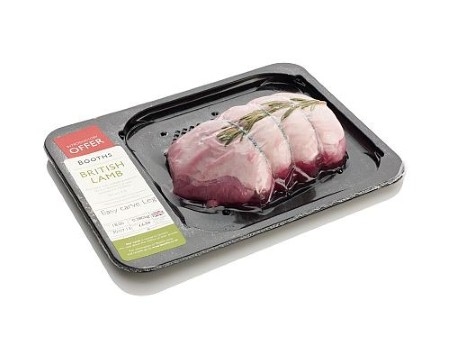 material packaging manufacturer has the broadest rigid VSP tray range on the market today. Fish, meat and poultry packers can choose from four tray material options ensuring they receive a solution best suited to their application. The trays are lightweight, fully recyclable and compatible with a range of high barrier, high shrink films.
material packaging manufacturer has the broadest rigid VSP tray range on the market today. Fish, meat and poultry packers can choose from four tray material options ensuring they receive a solution best suited to their application. The trays are lightweight, fully recyclable and compatible with a range of high barrier, high shrink films.They are available in mono PET, PET/PE, Barrier PP and Barrier EPS and suitable for all current VSP designed tray sealing machinery. LINPAC Packaging’s continual innovation programme has enabled the company to develop a competitive alternative to the standard sheet skin packs traditionally used in vacuum skin packing. The company has developed three application styles:
1. Normal vacuum skin pack (below the flange protrusion)
2. Protruding vacuum skin pack (slightly above the flange protrusion)
3. Super-protruding vacuum skin pack (High protrusion above the flange)
Joanna Stephenson, Vice President Marketing and Innovation at LINPAC Packaging, said: “Our range of rigid trays for VSP applications gives our customers great flexibility in terms of pack design. They are not locked in to a particular tray, machine, material or film type and, in addition, the vacuum seal extends shelf life performance by several days minimising food waste, all of which adds value to customers’ bottom line.
“The trend towards VSP is growing rapidly, particularly in the UK, and it would be unwise for LINPAC to ignore such a fast-growing market. However, it is important to stress that we are not moving away from our roots in MAP; instead we are extending our capabilities and innovation so that our customers have a greater choice for packing their fish, meat and poultry and demonstrating that we are able to respond to changing market demands.”
Ms Stephenson added: “Retailers and manufacturers are increasingly opting for VSP because of the extended shelf life it offers them enabling reductions in supply chain waste. As consumer demand across the world continues to shift towards the ready availability of fresh and chilled meat and poultry, the pressure on the packaging industry to develop products which ensure foods remain fresher for longer is growing.”
LINPAC rigid trays are considered the latest in novel pack design and available in a choice of colours with multiple labelling options, giving enhanced consumer appeal and shelf presence. The variety of pack designs also enables shingling which maximises on-shelf appeal and shelf space efficiency.
“Food producers, processors, manufacturers and retailers are now very much aware of the food waste problem but it is still a relatively new issue for many consumers who have often discarded unwanted food without a second thought,” said Ms Stephenson. “A report by INCPEN ‘Food Loss & Waste and Food Packaging’ suggests 222 million tonnes of food is wasted, that is food that is not consumed and discarded either through negligence or a conscious decision, at consumer level in Europe each year.
“Retailers, food and packaging manufacturers have an important role to play and must rise to the challenge of helping consumers minimise waste by delivering innovative packaging solutions which suit their lifestyle and which maximise the shelf life of stored products in the homes.”







